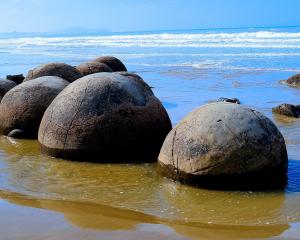A rogue population of wallabies found outside their South Canterbury containment area has Environment Canterbury biosecurity staff worried.
They suspect the new population, found at the head of Lake Pukaki, has been deliberately released.
Environment Canterbury (ECan) has contained the wallabies within a defined area in South Canterbury, bordered in the south by the Waitaki River and lakes and Tekapo River.
In the past, single wallabies have been found outside the area.
Timaru biosecurity team leader Brent Glentworth said confirmation of a population of wallabies at the top of Lake Pukaki, several kilometres away from the containment area boundary, is "a bit of a concern".
"We don't know for sure how they got there, but we doubt they got their on their own accord. We have to assume they were taken there," he said.
There were no other wallabies between the containment area boundary and the new population.
The habitat between the two areas is also unsuitable for wallabies.
A single wallaby was shot in the same area about two years ago, and that was thought to be the end of the story.
However, signs of more wallaby were spotted recently and an aerial survey located one wallaby.
The signs were over a 4sq km area between 800m and 950m above sea level, in habitat suitable for wallabies.
The area is still being searched to determine how large it is and how many wallabies there might be.
Mr Glentworth said the signs indicated a viable breeding population, but the number could not be ascertained.
The wallaby is designated a pest and three can consume the same amount of feed as a single stock unit.
Mr Glentworth said spring growth would make it difficult to eradicate the population now, because they would be less likely to take poisoned bait, but a control programme would be be carried out in winter when feed was short.
If the population cannot be eradicated, ECan might have to consider extending the containment area.












